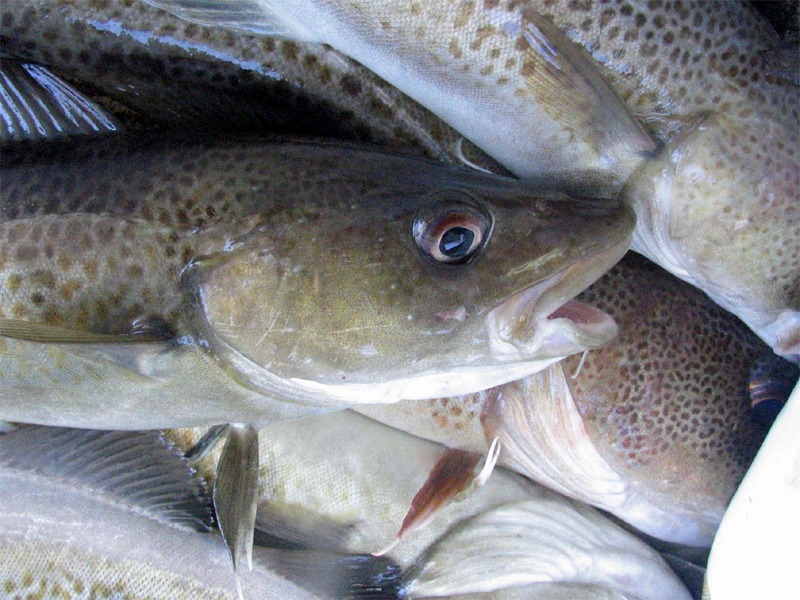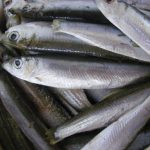
Eastern Baltic Cod. Credit: Matthieu Godbout/Wikimedia Commons (CC BY SA 3.0)
In the Baltic Sea, the exponential growth of grey seals since the 1980s has raised concerns in the fisheries industry, especially in relation to the impact they may have on the region’s most important fish stocks. As seal populations elsewhere are recovering and interacting with fisheries, these concerns are reflected worldwide, along with conservation concerns about the fish that seals eat.
The story, though, is not that simple. Human-induced impacts such as climate change and eutrophication – the overgrowth of plants and algae due to excessive nutrients in the water – have also impacted the Baltic Sea. According to a study by researchers from UBC’s Institute for the Oceans and Fisheries, Stockholm University and the Swedish University of Agricultural Sciences, fishing mortality and environmental factors affect fish biomass and catches in the region more than seal predation.
“Our study demonstrates that the Baltic Sea is both very driven by environmental changes while also being highly sensitive to anthropogenic changes,” said Dr. David Costalago, the study’s lead author and a former Postdoctoral Researcher at Stockholm University’s Department of Ecology, Environment and Plant Sciences, now a Postdoctoral Research Fellow at UBC’s Institute for the Oceans and Fisheries.
“Our study demonstrates that the Baltic Sea is both very driven by environmental changes while also being highly sensitive to anthropogenic changes,” said Dr. David Costalago…

Sprat. Credit: Szabi237/Wikimedia Commons (CC BY 3.0)
By modelling different future conditions, the researchers investigated how grey seal predation is expected to affect fish stocks of Baltic cod, Baltic herring and Baltic sprat until 2098. These fish stocks are considered the most economically important to the Baltic Sea, and have their largest stocks in the Baltic Proper, an offshore area in the Baltic Sea that was modelled for the study. The majority of Baltic grey seals are also found there. Conditions considered included factors such as seal numbers, climate, nutrient load – the amount of nutrients entering an ecosystem – and how the cod trawling fishery might impact fish stocks.
The researchers found that seal abundance generally did not have major effects on the biomass of adult fish. Consumption by grey seals at a population size of 30,000 individuals was found to affect fish biomass less than climate change, nutrient load and fisheries. By contrast, cod trawling fishing and environmental forcing – which includes climate change and nutrient load scenarios – had considerable impacts on fish biomass, and were found to be the major determinant of fish biomass.
If 100,000 seals were located in the study area, they would consume around 49,000 tons of adult herring, accounting for 3.65 per cent of the estimated herring stock size in 2017. For cod, the region’s most economically important fish species, the study predicts that the 30,000 to 35,000 seals currently inhabiting the Baltic Proper consume less than 9,000 tonnes of adult cod annually. In comparison, according to the International Council for the Exploration of the Sea (ICES), annual catches of cod in the region by humans have never fallen below 30,900 tonnes.

Grey seal. Credit: Dunpharlain/Wikimedia Commons (CC BY-SA 4.0)
“We want our insights to inform management and conservation efforts, and to help them consider the whole ecosystem and multiple pressures, not only how much fish the seals eat,” said Costalago. “Often, debates about the impact of seals arise from poor understanding of the complexity of the ecosystem.”
Different environment and fisheries conditions were also expected to influence the impact of seal predation on fish. For example, in scenarios with less cod fishing, seal prey less on herring and sprat. This is because grey seals tend to prey more on cod than on other species whenever cod is available in the environment.
The researchers also found that the predation mortality of Baltic fish by grey seals was higher when cod, sprat and herring fish stocks were at their lowest, which points to the importance of maintaining cod populations at relatively high levels, as doing this could reduce cod predation mortality by seals.
“There are, however, two important aspects that were out of the scope of our study but also need to be addressed: the economic damage produced by some seals when they raid the fishing gears of coastal fishers, and the increase in the parasitism by cod liver worms that use seals as their final hosts,” Costalago added. “We need to find ways to both secure the revenues of the fishers, and also guarantee the conservation of the fish stock and good status of the grey seal population.”
The paper “The necessity of a holistic approach when managing marine mammal-fisheries interactions: Environment and fisheries impact are stronger than seal predation” was published in the journal Ambio.
Tags: Baltic Sea, cod, conservation, David Costalago, herring, IOF postdoctoral fellows, Modelling